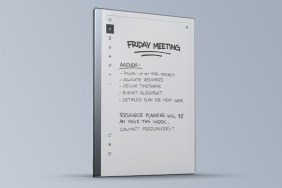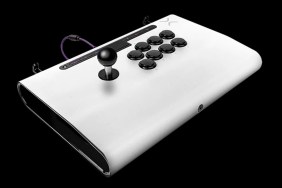Disease, violence, and identity theft. Just another day in New York City.
If most superheroes get their powers from a high-end superpowers boutique, you can be sure that Prototype’s Alex Mercer gets his from a thrift store. His abilities are the discarded, overstocked, defective leftovers from the stores where the rest of the superhero crew shops. He can glide but not fly, run up buildings but not down them, throw cars but not drive them, disguise himself as powerless citizens, and put to use countless other powers that other superheroes have already snubbed.
[image1]With Prototype, Radical Entertainment have set off on their own to develop an original superhero IP using many of the same design concepts and gameplay ideas present in their earlier superhero game, The Incredible Hulk: Ultimate Destruction. Those who’ve played that game will instantly recognize many of the same core mechanics like throwing cars at helicopters and running up the sides of buildings. Even the charged jump looks and functions exactly like it did in Ultimate Destruction, just with much less torn jeans.
Other than Alex Mercer’s skin tone, there aren’t many departures from Radical’s earlier superhero game. Just like in Ultimate Destruction, as you complete missions and kill enemies, you’ll earn experience points that can be used to learn dozens of unique skills and abilities. While some are merely enhancements of innate abilities—like running faster or jumping higher—others introduce totally new dynamics—like the ability to grapple your way onto a flying helicopter or to absorb a person’s appearance, skills, and memories.
Building your skills is great fun, and most of the combat abilities borrow from the familiar God of War playbook, allowing you to choose between close-range blades, a longer bladed weapon, ultra-heavy fists, and a whip/chain attack. You can also pick up and use projectile weapons left lying around from your fallen foes, but ammo is limited to whatever’s in the weapon when you pick it up (apparently, Alex’s clumsy clawed hands prevent him from being able to reload a gun).
As much fun as good ol’ fashioned melee combat can be, it’s severely hampered by a god-awful auto-lock system. Not only is it difficult to predict who or what the auto-lock might target—locking onto relatively harmless infected citizens as often as onto more threatening enemies—but the auto-lock system also can send the camera into more uncomfortable twisting and turning than an aging stripper. When there’s a healthy distance between you and your opponent, it works fine; unfortunately, most of the game involves close-quarters melee combat, so take your Dramamine well in advance.
[image2]In its mission types, Prototype offers a sloppy mix of poorly paced ideas. Some of the lengthiest missions involve simply going from one end of Manhattan to the other, while some of the shortest missions are climactic sieges and battles. Missions can be brutally challenging, often because of the uncooperative auto-lock system, and checkpoints appear willy-nilly with little rhyme or reason as to their placement. Boss battles are much longer than they need to be, and more often test your endurance rather than your skill.
The main story missions never branch, so if there’s one you’re having problems with, you’re completely stuck. Luckily, you can take an extended detour into one of many side missions. A variety of “events” become unlocked as you progress through the game that include things like Crackdown-style rooftop races and Assassin’s Creed-style information gathering. You can also hunt down missing memories in the “Web of Intrigue,” which is a menu screen full of interconnected movie clips meant to help elucidate the back-story.
While the two games are otherwise very different, the plot of Prototype closely resembles that of InFamous. New York City has undergone a large-scale epidemic and is put under military quarantine. Alex is at the epicenter of the outbreak—which is how he gets his powers—and he must face off against super-powered infected humans and against the military trying to contain the outbreak. While this sounds like straightforward, predictable video game fare, Radical Entertainment tells the story in small jumbled fragments. Unfortunately, they seem to do so for no better reason than to make the story seem more interesting than it actually is.
[image3]Adding to the storytelling woes, every mission is introduced through a cinematic sequence. No matter how insignificant the mission or how inconsequential the explanation, you must sit through a load screen, watch a short cut-scene, watch another load screen, and then finally enter the mission. It’s a clumsy, jarring, and unnecessary way to keep the story moving. Less forgivable is that many of the cinematic sequences are shorter than the load screen itself.
As an open-world game, Prototype fails utterly. Buildings and environments are ugly, plain, and without distinction whatsoever. The main story path is entirely linear, and while there are collectible orbs and a variety of side missions, the world isn’t a place you want to explore, so there’s little motivation to bother with all of these extras. While it’s impressive just how many citizens, enemies, vehicles, and explosions can appear on-screen at once, there are no engaging A.I. routines or physics modeling to bring any of those things to life. Citizens and cars are nothing more than dead leaves for you to crunch thoughtlessly underfoot.
For all its pesky faults and shortcomings, Prototype is great during those few short moments when everything comes together. When the camera isn’t doing funky things during melee combat, when you sneak into a base disguised as a soldier, when you’re soaring from building to building for the pure joy of it, or when you’re hitchhiking on a passing helicopter just because you can, Prototype momentarily feels fresh and fun. If you’re willing to put up with its annoying design issues, drab appearance, and second-hand feel, you might find that, like a shirt with different-lengthed sleeves, Prototype holds up so long as no one looks too closely.
-
Huge skill tree
-
Solid melee mechanics
-
…if not for the finicky camera
-
Ultimate Destruction Redux
-
Poorly balanced missions
-
Confusing and awkward storytelling
-
A lifeless open world










